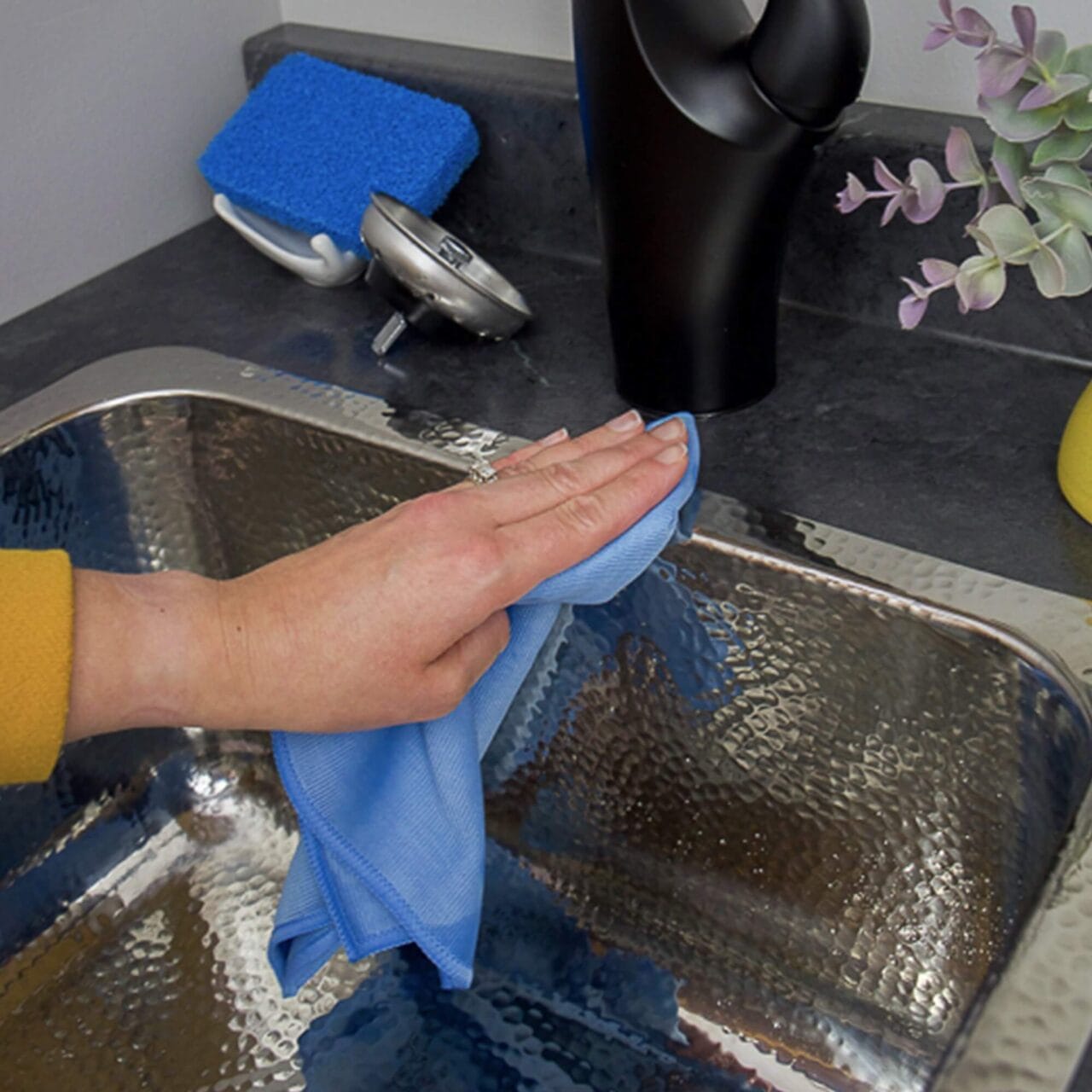Tips & Tricks: Disinfecting Your Sinkology Sink
Clean surfaces are essential in maintaining a healthy environment for your family, and your kitchen sink needs to be part of the cleaning equation. When it comes to stubborn germs and viruses, cleaning alone isn’t always enough. The coronavirus, in particular, can live on some surfaces for days. And with more people hanging out at home for longer periods of time, that means disinfecting your home’s surfaces should be part of your daily virus-fighting routine. In particular, disinfecting your kitchen and bathroom sinks should be something that you begin to build into your home’s regimen (during times of coronavirus and beyond!).

Cleaning versus Disinfecting Your Sink: What’s the Difference?
It’s safe to assume that nearly all of us clean our homes regularly. Whether it’s due to a steadfast routine or because we simply can’t stand looking at piles anymore, cleaning becomes part of running an effective household. But disinfecting? That’s a different story!
Cleaning the surfaces of your sink is important because it removes dirt, germs, and impurities. This means that all of those food particles, liquids, dirt, grime, and other contaminants that hit your sink can be reduced by cleaning. Daily cleaning helps to keep germs at bay and significantly reduce the spread of viruses and germs by reducing the number of living germs and bacteria on high-touch surfaces, like your kitchen sink, faucet handles, nozzles, and more.
Disinfecting surfaces, on the other hand, actually kills the germs and viruses that are living on the surface. Unlike cleaning, which removes germs but doesn’t kill them, proper EPA-approved disinfectants will kill germs, but not necessarily remove them.
Should You Clean or Disinfect Your Sink?
Trick question! The answer is both. If you clean your sink first, you can remove germs, grime, dirt, and other items that may be stuck to, or living on, the surface of your sink. Follow up your cleaning routine with a disinfecting spray or EPA-registered disinfectant product. The CDC has created a list of approved products that are known to kill the COVID-19 virus.
Cleaning tends to give us all a higher sense of satisfaction because we can see visible changes in the surface of our sink, whereas disinfection may not cause any visible changes. The one-two punch of disinfecting and cleaning will ensure your sink’s surface is safe, clean, and as beautiful as ever!

How to Disinfect Your Kitchen and Bathroom Sink
Good news: disinfecting your kitchen or bathroom sink does not have to be a huge ordeal. Follow our guidelines below on how to disinfect your kitchen and bathroom sinks. These tips are likely safe to follow for any kitchen or bathroom sink, but you may want to double-check with the manufacturer to make sure there are no special instructions on how to safely disinfect your specific sink.
Disinfecting Sinkology Fireclay, Vitreous China, Nickel, and Stainless-Steel Sinks:
You can use any EPA-certified disinfectant on your Sinkology fireclay, vitreous china, nickel, or stainless-steel sink. It’s possible that you have some of these products already in your home, like Clorox or Lysol wipes, so you can get to disinfecting right away. If you don’t have any EPA-registered disinfectants already at home, you can also use your own homemade disinfectant by creating a bleach-based disinfectant using the ratio of ⅓ cup of bleach per one gallon of water. Be sure never to mix household bleach with ammonia or any other cleanser, as it could cause damage to your lungs.
Disinfecting Sinkology Copper Sinks:
One of the biggest perks of having a Sinkology Copper sink is that copper is naturally antibacterial–meaning your copper sink is disinfecting all the time! With copper kitchen and bathroom sinks, regular cleaning is recommended. Wash your sink with warm water and regular dish soap for the best clean that is also gentle enough to preserve the patina. You don’t want to use too much bleach unnecessarily on your sink’s surface, although a bit of bleach or a simple wipe with a disinfectant wipe is not going to ruin your sink. We recommend following the CDC’s recommendations to disinfect your sink. One best practice for copper sinks is to eliminate any standing water–this prevents damage to the patina as well as reduces the changes for additional bacteria or germs to populate.
If you’re looking for more tips on how to keep your Sinkology sink safe and healthy, reach out to our customer service team. Our Sinkologists are ready to help!
You Might Also Like:
Obsessed With My New Crafted Stainless Steel Sink
If you have any additional questions during your search for the perfect copper, fireclay farmhouse sink or crafted stainless steel sink, our Sinkologists™ are here to help. Contact us or follow us on Facebook, Houzz, Pinterest, Instagram, or TikTok for more helpful tips and design ideas.